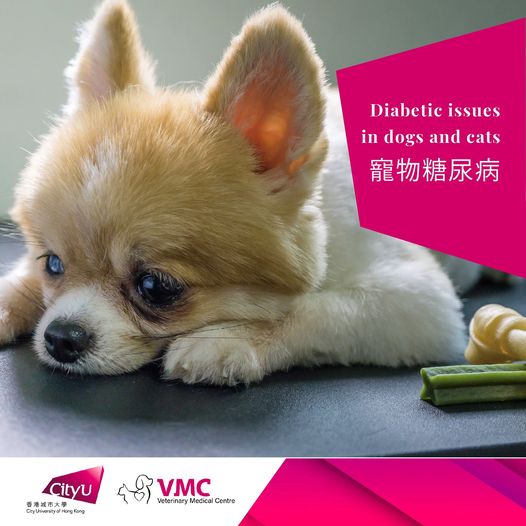
What is Diabetes?
Diabetes is a disease characterised by uncontrolled levels of glucose in the bloodstream.
Usually, glucose is regulated by a substance called insulin, this is released from special cells in the pancreas in response to high glucose levels in the blood, for example after eating a meal. Insulin helps to transport and store excess blood glucose into body cells, thereby controlling the level of glucose circulating in the bloodstream.
In a diabetic patient, the body does not have a normal regulation of glucose due to problems with insulin. Insulin may either:
a) Obese animals are at a much higher risk of diabetes. Other risk factors include breed, age, sex, certain underlying conditions, and certain long-term medications.
OR
b) Not be recognised by the cells it is supposed to act upon – similar to Type 2 ‘insulin resistant’ diabetes in humans. This type of diabetes is usually seen in cats.
If glucose levels are not regulated, glucose in the bloodstream will be persistently high and lead to problems within the body.
Who is at risk?
Obese animals are at a much higher risk of diabetes. Other risk factors include breed, age, sex, certain underlying conditions and certain long-term medications.
What are the common symptoms?
The most common signs noticed by pet parents are -
1) Excessive thirst and excessive urination:
Diabetic animals often have glucose in their urine – the high level in the blood cannot be effectively filtered by the kidneys. This glucose causes more water to pass into the urine, and therefore an increase in urination volume and regularity. Your pet becomes thirstier to replace these fluid losses.
2) Excessive hunger:
After a meal, glucose from the food moves into the bloodstream. If an animal cannot store the glucose it gains from its diet due to diabetes, the animal will continue to feel hungry despite having eaten, and therefore eat excessively.
3) Weight loss and weakness:
As glucose from the diet is not being stored for use, an animal will start to break down excess fat stores and even muscle for energy instead. This leads to weight loss of both fat and muscle.
As glucose from the diet is not being stored for use, an animal will start to break down excess fat stores and even muscle for energy instead. This leads to a weight loss of both fat and muscle.d can be life-threatening.
Signs of DKA include vomiting, anorexia, extreme lethargy or collapse. If you suspect your animal to be suffering from DKA, you must visit your veterinarian as an emergency situation.
After a successful diagnosis involving blood and urinary testing, your veterinarian will prescribe the use of twice daily synthetic insulin injections, give dietary recommendations, and undertake treatment of concurrent underlying conditions.
Excess glucose can cause a change in the proteins within the lens of the eyes, leading to cataract formation. This can present as seemingly ‘cloudy’ eyes and potentially lead to vision loss.
After a successful diagnosis involving blood and urinary testing, your veterinarian will prescribe the use of twice daily synthetic insulin injections, give dietary recommendations, and undertake treatment of concurrent underlying conditions.
Treatment
If you see any of the signs above, please contact your veterinarian for advice.
After successful diagnosis involving blood and urinary testing, your veterinarian will prescribe the use of twice daily synthetic insulin injections, give dietary recommendations, and undertake treatment of concurrent underlying conditions.
Never attempt to change your insulin dose alone:
ALWAYS CONSULT YOUR VETERINARIAN.
Appointment/Enquiry:
3650 3000 (Mon-Sun: 9:00am – 7:00pm)
Address:
G-2/F, Trinity Towers, 339 Lai Chi Kok Road, Sham Shui Po
Online booking for revisit with primary care veterinarians or vaccination:
https://www.cityuvmc.com.hk/en/online-booking